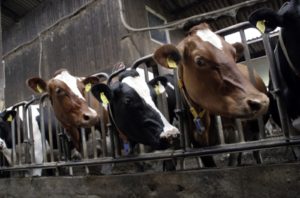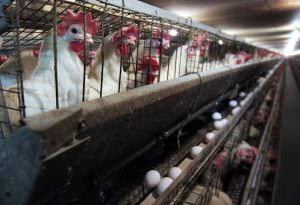When Animals Pay the Price of Domestic Violence
The victims of domestic abuse aren’t exclusively human. All too often, pets are targeted in strategies of terror and control. Shane Albuquerque / Pexels
Shane Albuquerque / Pexels
By Carol J. Adams
In the late 1970s, I started a hotline for battered women in rural New York. I helped one woman get an order of protection against her abusive husband. She was in the process of getting a divorce, but he had visitation rights with their children on Sundays. One Sunday evening, he pulled up to her farmhouse to drop off the children and asked to talk with her. She climbed into his truck, next to the kids. Their dog was lying on the driveway. In response to something she said, he put the truck into motion, drove over the dog, backed up and ran over it again. Then he got out of the truck and shot the dog.
Violence against a companion animal is also violence against the person who loves that animal. It is a tool abusers often use to establish control, by emphasizing the human victim’s lack of power—she can’t even keep a beloved animal friend safe. Harming a companion animal also may signal that the abuser’s violence is escalating, possibly becoming life-threatening.
A study of women seeking shelter from abusive partners at a safe house found that of those who had companion animals, 71 percent reported that their partners had threatened, harmed or killed those animals. Batterers have shot, hung, knifed, stepped on, choked, thrown, whipped and poisoned animals. Unlike property damage (throwing plates, destroying photos, etc.), violence against a beloved animal inflicts physical damage and pain and often annihilates someone—the animal.
In the summer of 2016, I posted a notice on my Facebook author page and on Twitter, saying I was updating my 1995 essay, “Woman-Battering and Harm to Animals.” “If you are a survivor of domestic violence who experienced a threat or violence against a companion animals as part of the domestic violence, would you message me?” I asked. Women from around the world responded.
Katrina recalled how, over a period of eight years when she was a child, her father’s violence against her mother would begin by him throwing their cats across the room and into walls. Marie’s father “always threatened to harm our domestic animals as a way to manipulate us and scare us. He would be very enthusiastic at first and would help us find dogs [and] cats, but once we got attached, it’s like he was jealous or something.” Harming animals consolidates control of children while also undermining their self-determination in loving another being. One woman described how her abusive brother tried to kill their dog during their childhood. Other children were coerced into sexual abuse by threats to their companion animal; these threats also ensured their silence.
L.’s father physically abused her mother and brothers. But when it came to her, he targeted her cats. “My first one he ran over when I was in the car (he wouldn’t let me get out to get her) as we went up our driveway,” she reported, adding that the cat wasn’t killed immediately, so her father took the cat in the backyard and shot her. “This was done with the whole family present, and no one dared to do anything,” L. said. “I cried hysterically. He smirked all night long. In addition to hurting me, there’s no doubt he was also controlling my mother, because if she’d have got mad, he would have hit her.”
Everyone in the family understood that life and death were in the father’s hands. Part of his control was that his abusive actions provoked tremendous emotion, but the expression of those feelings was not allowed. The person one would normally turn to for support and consolation after an attack on a pet is instead the cause of the pain. Unable to express her grief, a woman may feel guilt, rage and hopelessness over not being able to protect the animal, and children learn from their mother that they shouldn’t react to the death of someone they love.
Jodi described how her “high school boyfriend was physically and emotionally abusive. He would come over to the house and scream at my mother’s little dog and chase her around, calling her ‘stupid,’ until the dog would pee on the floor.” By frightening the dog, he demonstrated his power. Making someone watch the torture of another is the ultimate mastery, a way of saying, “I can do this, and there is nothing you can do to stop me.”
Julie, a domestic violence survivor, told me that her partner shot her dog, replaced the dog with another, shot that one, and once more replaced him, killing that one as well. He threatened to shoot her horse. Such repetitive harm exposes the deliberateness of battering and its basis in control over another person. While presenting a new dog could appear to be an act of remorse, it also guaranteed that the power imbalance in the relationship would continue.Some women stay with abusers because they worry that if they leave, their animals will be in danger; some leave precisely because they realize their companion animal is not safe. These are difficult and wrenching decisions. C. said of her partner:
“[He] never threatened my two cats explicitly; it was a deep fear I had that he would retaliate against me by hurting them that eventually pushed me to contact authorities. I can still remember calling to explain that I was worried about my cats and then being really confused and flabbergasted when the police showed up and explained they were going after him. He did 30 days in jail, and they put a restraining order on him. If it were not for that feeling I had that my cats were in danger, I wonder if I ever would have acknowledged that I myself was in danger (he was extremely emotionally abusive and sent multiple death threats to me over text; the [district attorney’s office] said it was the worst case they had ever seen).”
C. saw that moment as “the turning point, when I realized how seriously unsafe I was and how his behavior was not normal.”
Abusers harm animals to perpetuate terror. M. described what happened after she discovered her partner was cheating on her. “During one particular argument—the day before I ended it—he said, ‘I will take [your black lab mutt] onto the front porch and wait until you pull in from work, then I will shoot her in the head with the shotgun. Because I know she is the only thing you give a shit about.’ ” The threat reflects the deliberateness of the violence: He wasn’t going to do it at that moment; he was going to time it for maximum effect. The incident also reflects how a batterer may feel threatened when he sees self-determination—in this case, her love of her dog—on the part of his partner.
In domestic violence situations, any loved one is also in danger, because batterers often use that love to terrorize the victim. Natascha described how her partner “was beating me and attacking the cat. When the cat later was fearing him, he was saying that the cat was provocative, whereas the cat was simply and logically afraid. I will never forgive him what he has done to her. And I am blaming myself that I didn’t protect her from him.”
Carol said her partner “forcibly yanked the dog away from me, and holding him by the collar, he put the puppy in his car and said that he was taking him to the local animal shelter and promptly drove away. Both my daughter (who was 9) and I begged him not to take the dog, but he ignored us (we were both in floods of tears).”
She called the shelter with a description of the dog, but D., her partner, had not gone there. “Eventually, I called D. (still in tears) and pleaded with him to tell me where my dog was,” she said. He returned, and “in future arguments he would constantly use my dog’s behavior against me … he would scream repeatedly, ‘train your dog,’ over and over, and not let me speak.”
Making illogical or absurd demands and knowing they cannot be fulfilled are also strategies of control. Carol said:
“[I] tried to get [the dog] enrolled at a local dog training center, but that wasn’t right either. For a start, it wasn’t one that had been recommended to him by a friend, and he was annoyed that I intended to take my daughter [with me]. He said that she should stay home. …. He then decided that I couldn’t go because it was a Wednesday, and I would HAVE to go to the club as recommended by his friend instead. He said I couldn’t take my daughter but he would be going out on a Wednesday night so she couldn’t stay home as she was too young to be left. As an act of pointless rebellion, I refused to go to this other club, so that was also used as ammunition against me as I was now refusing to ‘train my dog.’ The arguments between us got worse and more frequent, and eventually he became violent towards me.”
Batterers want people, especially their partners, to think of them as crazy, because it makes them more dangerous in their partner’s eyes. As Carol’s experience shows, nothing would please her partner—a reminder that for an abusive person, there will always be something to find fault with.
Creating a climate of fear is part of controlling behavior. “Whenever he raised his voice the dog would always come to my side, but (thankfully) never, ever showed any aggression towards D.,” Carol said. “I used to take the dog everywhere with me because I was terrified that one day I would come home and [the dog] would be gone. He threatened me with that so many times, and he used to laugh at me when I would take the dog with me, but I couldn’t leave him there.”
Carol continued, “I was offered a place in a women’s refuge for me and my daughter, but I couldn’t take the dog with me. I refused to leave him behind, and I could never have parted with him. Never. Eventually I just packed our things one day when he was out and we left. Never to return. We now live in a safe environment, the dog is 5 years old, and we have a bond that cannot be broken.”
Note: In a majority of states, orders of protection now include companion animals. Many domestic violence shelters have relationships with vets and other animal resources to provide a safe haven for a companion animal if a victim has to flee her home. If you are in this situation, make sure your companion animal’s shots are up to date, and register the animal in your name. Add proof of registration to your escape kit. Disable cookies if you are using your home computer, and scroll down to “What You Can Do” here.
Carol J. Adams is the author of “The Sexual Politics of Meat.” For this article she drew on her essay, “Woman-Battering and Harm to Animals” in “The Carol J. Adams Reader,” published by Bloomsbury.
Your support matters…
Independent journalism is under threat and overshadowed by heavily funded mainstream media.
You can help level the playing field. Become a member.
Your tax-deductible contribution keeps us digging beneath the headlines to give you thought-provoking, investigative reporting and analysis that unearths what's really happening- without compromise.
Give today to support our courageous, independent journalists.






You need to be a supporter to comment.
There are currently no responses to this article.
Be the first to respond.